![]()
![]()
![]()
Use LEFT and RIGHT arrow keys to navigate between flashcards;
Use UP and DOWN arrow keys to flip the card;
H to show hint;
A reads text to speech;
77 Cards in this Set
- Front
- Back
|
ANATOMY |
The study of the structure of an organism
|
|
|
PHYSIOLOGY |
The study of the function of an organism’s anatomy
|
|
|
Anatomical Position |
The body is erect. The palms, arms, and hands face forward. |
|
|
Superior |
Above |
|
|
Inferior |
below |
|
|
Anterior/Ventral |
refers to the front surface of the body
|
|
|
Posterior/Dorsal |
toward the back or back surface.
|
|
|
Prone |
on the belly |
|
|
Supine
|
– on the back
|
|
|
Lateral
|
– related to the side
|
|
|
Proximal
|
– nearest point of attachment
|
|
|
Distal
|
– furthest away from point of attachment
|
|
|
Rostral |
- toward the front/anterior (Latin rostrum=beak)
|
|
|
Caudal
|
– toward the back/posterior (Latin caudum=tail)
|
|
|
Plane |
is a flat or relatively smooth surface. Refers to the imaginary Axes of thebody.
|
|
|
Axis (plural axes)
|
is a real or imaginary line running through the center of the body.
|
|
|
CoronalPlane
|
– divides the body into front and back sections
|
|
|
Sagittal Plane
|
– divides the body into left and right portions
|
|
|
Transverse Plane
|
– divides the body into upper and lower halves
|
|
|
Flexion |
|
|
|
Extension
|
|
|
|
Hyperextension
|
– example is arching back (also known as dorsiflexion)
|
|
|
Plantar
|
– refers to the sole of the foot –
|
|
|
plantar grasp reflex –
|
|
|
|
Palmar
|
– refers to the palm of the hand
|
|
|
Palmar reflex
|
– stimulating the palm of the hand causes the fingers to grasp
|
|
|
Pronation
|
|
|
|
Supination
|
|
|
|
singular word ends with an |
“a” (such as pleura)
|
|
|
plural will most likely be
|
“ae” (pleurae)
|
|
|
If the words ends with “us” (such as locus)
|
Then its singular |
|
|
(loci) with an “i”
|
will be plural
|
|
|
Word ending in “um” such as datum & stratum it is in the
|
singular form
|
|
|
Data & strata words ending in “a” is in the |
plural form
|
|
|
Tissues Aggregates |
|
|
|
What are the 4 types of tissues? |
|
|
|
Epithelial
|
-refers to superficial layer of mucous membrane (Paucity=scarcity-small number). Larynx is made up of layers of epithelial tissue.
|
|
|
Connective
|
-Most complex. Specialized for the purpose of support (blood is a fluid connective tissue - blood cells arise from within the marrow of bone which is also connective tissue)
|
|
|
Muscle
|
-specialized contractile tissue (muscle tissue can be stimulated to contract)
|
|
|
Nervous
|
-Highly specialized communicative tissue. This means that it consists of variations of neurons/nerve cells. The function of nervous tissue is to transmit information from one neuron to another, from neuron to muscle, or from sensory receptors to other neural structures.
|
|
|
What tissue forms the top layer of vocal folds? |
Epithelial Tissue |
|
|
What are the functions of the Epithelial Tissues? |
|
|
|
Internal membranes the are continuous with the skin and mucous membrane lining of the digestive, respiratory, and urinary tracts or tubes are |
Form by Epithelial Tissue
|
|
|
What are the 4 types of Connective Tissue? |
|
|
|
Which tissue connects or binds structures together, support the body and assist in bodily maintenance?
|
Connective Tissue |
|
|
What are the 3 types of Fibrous Connective Tissue? |
|
|
|
Yellow elastic
|
– areas requiring recoil such as trachea, cartilage, bronchi, and lungs
|
|
|
Hyaline cartilage
|
– on costal cartilage of ribs, larynx, trachea and bronchial passageways
|
|
|
Yellow (elastic) cartilage
|
–found on pinna of ear and epiglottis
|
|
|
What are the 3 types of Muscle Tissue? |

|
|
|
Striated
|
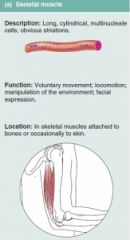
– skeletal, voluntary muscle
|
|
|
Smooth
|
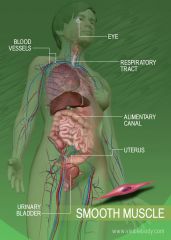
– visceral (Organs)- muscle of internal organs, involuntary (gastrointestinal tract)
|
|
|
Cardiac
|
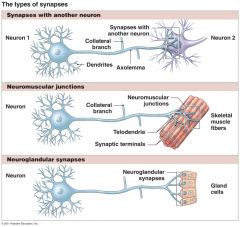
– combination of striated and smooth, involuntary
|
|
|
Nervous Tissue |
|
|
|
What are the 6 types of Tissue Aggregates? |
|
|
|
Fascia
|
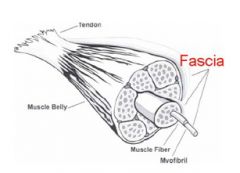
– surrounds organs
|
|
|
Ligament
|
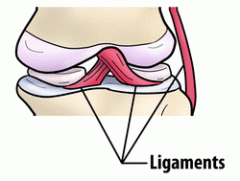
– refers to “binding”
|
|
|
Tendons
|
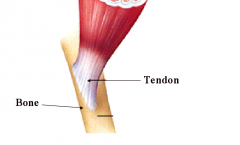
– attach muscle to bone or cartilage
|
|
|
When a tendon is sheetlike it’s called an
|
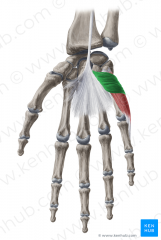
aponeurosis (singular). Aponeuroses are much like fascia except that they are denser.
|
|
|
Bones
|
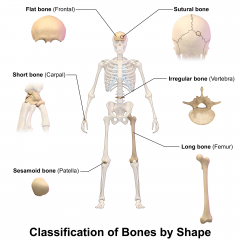
begin as cartilaginous mass hardens overtime. Generally, bones have a cartilaginous portion (rib cage).
|
|
|
Joints
|
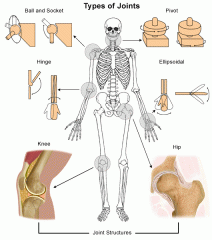
unions of bones with other bones, or cartilage with other cartilage classified based on the degree of movement that they allow.
|
|
|
Muscle
|
|
|
|
What are the 3 types of Joints? |
|
|
|
Fibrous joints (immobile)
|
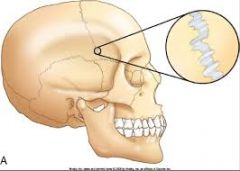
- (i.e., sutures between bones of the skull are not intended to move)
|
|
|
Cartilaginous joints (limited movement)
|
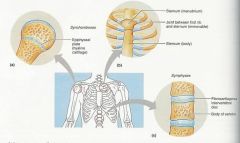
– cartilage provides union between two bones Ossifies through aging.
|
|
|
Synovial joints (highly mobile)
|
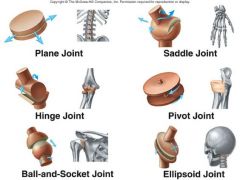
– include a joint cavity which contains synovial fluid (lubricating substance) contained within an articular capsule.
|
|
|
Name the 8 types of body systems. |
|
|
|
Name the systems needed for Speech and Voice (6) |
|
|
|
Respiratory (lungs)
|
– the “power source” for speech and voice.
|
|
|
Phonatory (larynx)
|
– provides the voicing (all vowels and certain phonemes)
|
|
|
Resonatory (vocal tracts)
|
– filters acoustic source provided by voicing
|
|
|
Articulatory (vocal tracts)
|
– shapes and modifies the acoustic source provided by voicing-or other movements to produce speech sounds
|
|
|
Nervous systems (CNS and PNS)
|
– controls musculature, receives and makes sense of input information
|
|
|
Auditory system
|
– Processes speech and non speech acoustic signals received and perceived by listener.
|
|
|
True or False? Speech and voice require integratedaction and coordination of all systems. |
True |
|
|
Mastication
|
– process of chewing
|
|
|
Deglutition
|
– process of swallowing
|

